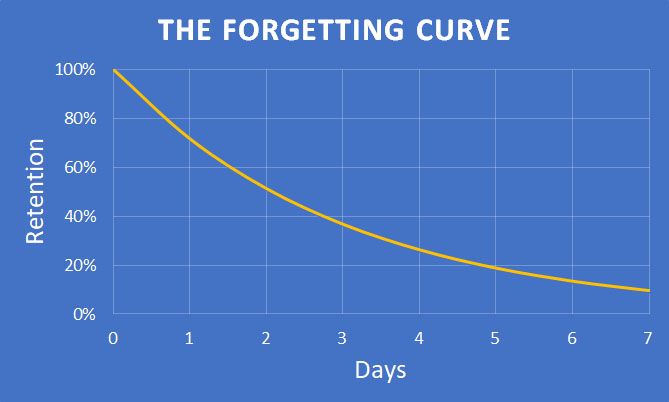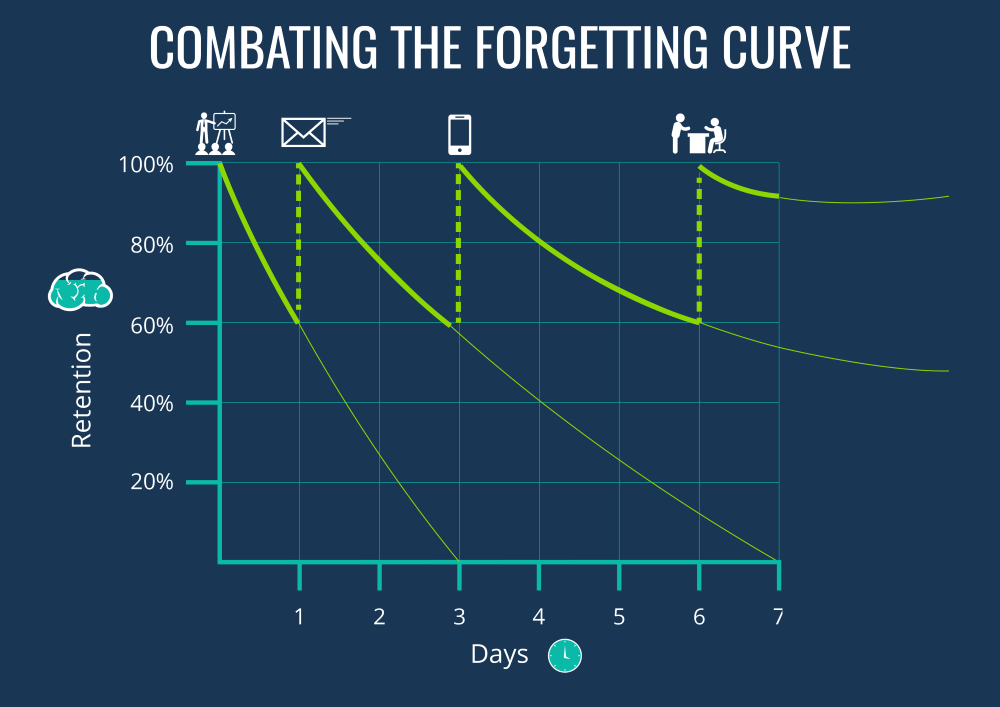Tutoring is effective.
Everyone knows that.
It's one-on-one, personal, and you have the complete attention of a (hopefully!) amazing teacher focused on a single student.
It can do wonders.
With the right help and attention, students can understand previously unclear concepts, practice doing questions, and apply newfound knowledge under the watchful guidance of a tutor.
But there's one important factor to consider: Timing.
How often should you see a tutor?
Even if a student understands a difficult concept during a lesson, there's no guarantee it'll permanently stick in their minds.
When they do homework a week later, sit a test at school or attempt an assignment, students have likely lost some of the benefits they gained from their tutoring session.
It's not the student's fault, and it's not the tutor's fault. It's just the way the human brain works. It's human psychology.
You see, the brain is constantly trying to filter out unimportant information. It's why you don't remember the license plate of every car you see, or what you ate for breakfast on the 17th of February last year. That information hasn't been needed in your life again so your brain just got rid of it.
Similarly, this is what happens to the content a student learns with a tutor.
- They learn and understand a new and difficult topic.
- Then they don't visit that topic for two weeks
- Then they sit a test about that topic
- Then they struggle to remember what their tutor taught them
This can be illustrated on a graph called the "Forgetting Curve"

When this happens, it's a massive roadblock to a student's progress. It kills their momentum.
And the next time they do a lesson they'll have to take two steps back and relearn old information before moving on to the next topic, keeping them in the “catch-up cycle” indefinitely.
The easiest way to make progress and keep it is to increase the frequency of lessons. This ensures that students never get too far down the "Forgetting Curve"
Here's a graph of what would happen if you had tutoring sessions regularly:

As you can see, every time you review topics with a tutor and conduct a tutoring lesson, students build on their knowledge from previous sessions.
This ensures that things they learn during tutoring sessions move from their short-term memory to their long-term memory. Because they kept practising and revisiting that topic, the brain marks it as important.
Especially when school gets to older year levels and teachers zoom at lightning speeds through large and complex topics, a student and tutor need to sit down often to ensure understanding of important concepts.
So, the final answer:
How much tutoring do I need?
Well, it depends.
At a MINIMUM, weekly 1-hour sessions are required to make tutoring effective. Otherwise, there's just no point to it.
For more complex subjects at higher levels, sometimes double lessons (2-hour lessons or 2 x 1-hour lessons) are required to help students keep up with the pace school is going at.
Either way - to stay above the forgetting curve, the more often you have lessons, the better
Want to supercharge your scores at school?
Book a free 30-minute study skills consultation with one of Australia's best tutors and we'll show you how.
References:
- Ebbinghaus, H. (1964). Memory: A Contribution to Experimental Psychology. United States: Dover Publications.






